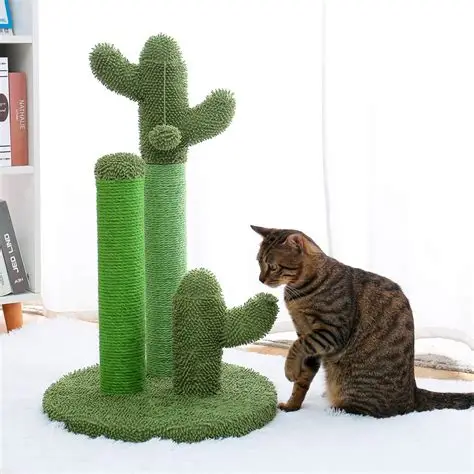Cacti are striking, low-maintenance houseplants, but they aren’t immune to the curiosity of pets.
If you’ve ever walked into a room to find your dog gnawing on a cactus or your cat swatting at spines, you’re not alone.
While cacti are resilient in nature, indoor environments present unique challenges—especially when inquisitive pets are part of the household.
Some cats love to nibble on leaves, while dogs might dig into potted plants out of boredom. The consequences go both ways: your cactus can get damaged, and your pet may suffer from thorns or stomach irritation.
That’s why understanding cactus pet repellent techniques is essential—not only for the health of your plant but also for the safety of your pets.
In this guide, we’ll explore humane, effective, and practical ways to keep your cactus safe from pets without using harmful chemicals or resorting to extreme measures.
From training strategies to natural repellents and strategic placement, you’ll find solutions that work for real homes and real animals.
Why Pets Are Drawn to Cacti
Not all pets are interested in cacti, but when they are, there’s usually a reason behind it. Here are some common explanations for this behavior:
- Curiosity: Pets explore the world with their mouths and paws. A new cactus might simply be something interesting to check out.
- Texture and movement: Some cacti have dangling flowers or fuzzy textures that trigger play or predatory behavior in cats.
- Boredom or anxiety: Dogs especially may dig in pots or chew on plants if they’re not mentally or physically stimulated.
- Scent: Soil, especially if it’s been recently fertilized or watered, can smell appealing to animals.
If you notice scratch marks in the soil, broken cactus segments, or pets spending too much time sniffing around your plant collection, it’s time to act.
Understanding the “why” behind the behavior helps you choose the right deterrent.
Safe Natural Repellents for Pets Around Cacti
If you’re looking to keep your cactus safe without using harmful products, there are several natural and pet-safe repellents you can try:
1. Citrus Sprays
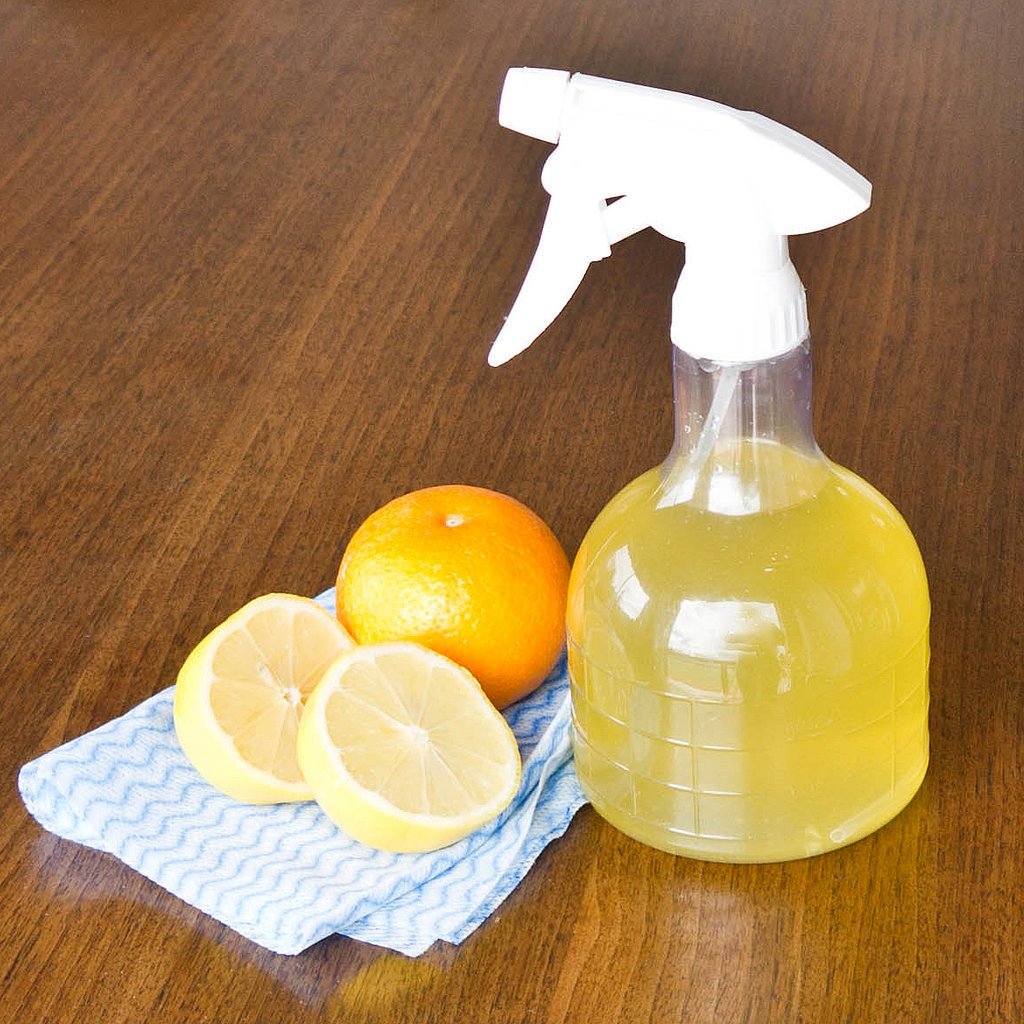
Most cats and dogs dislike citrus smells. Mix a few drops of lemon or orange essential oil with water and spray around the base of the cactus—not directly on the plant.
You can also use citrus peels in the pot to deter curious noses.
2. White Vinegar Solution

A 1:1 solution of vinegar and water sprayed near the cactus pot can repel pets. The strong scent is usually enough to keep them away.
However, use caution—it can alter the pH of the soil if overapplied.
3. Garlic or Chili Spray
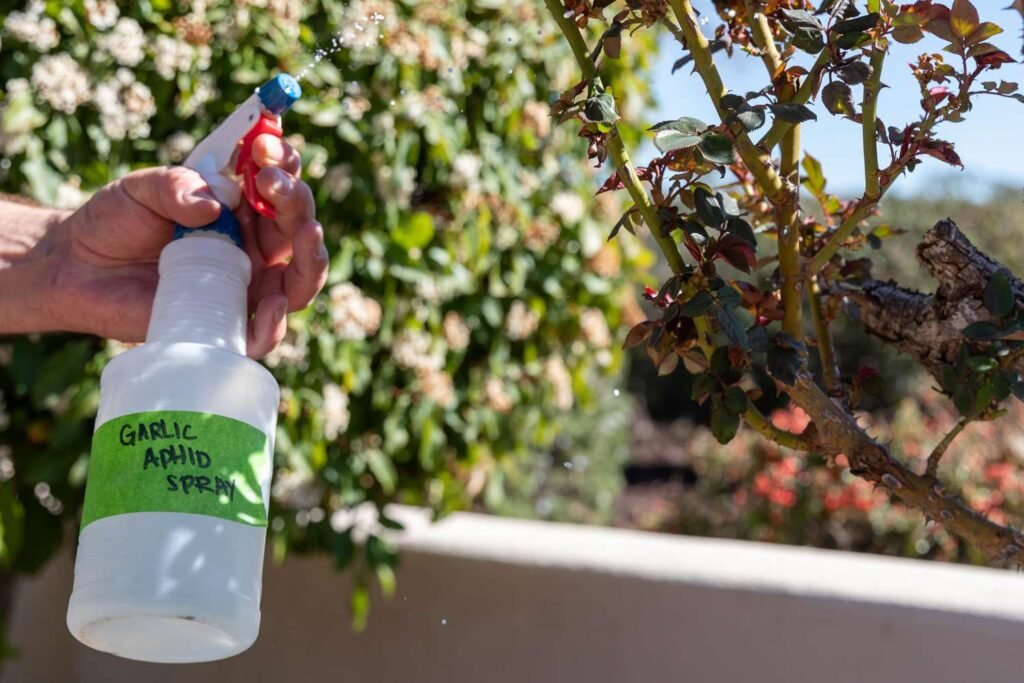
These ingredients can be used sparingly to make your cactus area less appealing. Mix crushed garlic or chili powder with water, strain, and lightly spray surfaces around the plant.
Be mindful not to spray on the cactus itself.
4. Commercial Pet Deterrents
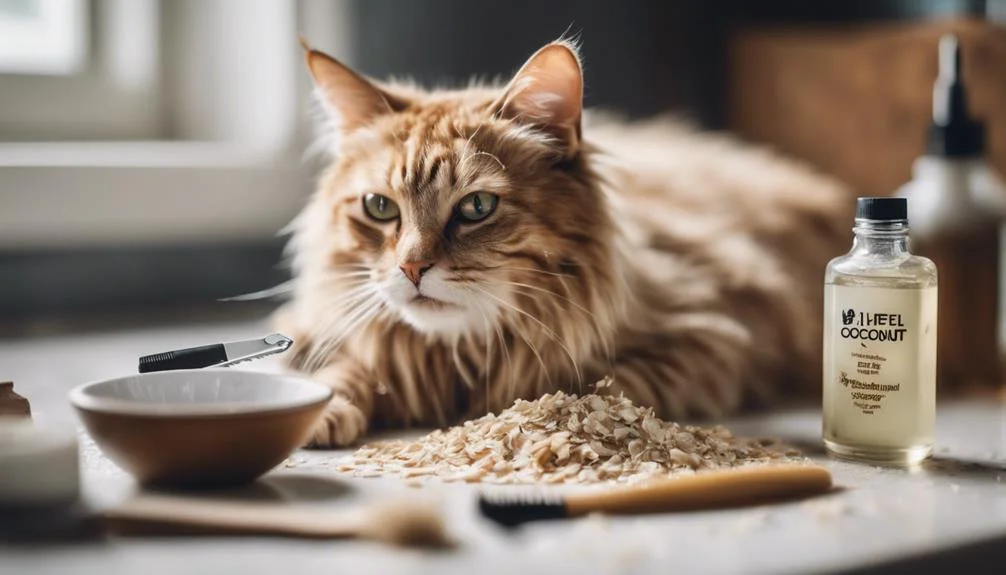
Pet stores offer non-toxic sprays designed to keep pets away from furniture and houseplants. Look for ones labeled safe for indoor use and non-toxic to animals and plants.
5. Coffee Grounds

Sprinkling used coffee grounds on the surface of the soil creates a texture and scent barrier that many pets dislike.
Precaution: Always test any spray in a small area first. Even natural substances can stress your cactus or stain nearby surfaces.
Using Physical Barriers to Protect Your Cactus
Sometimes the best pet repellent technique isn’t a spray or scent—it’s a good old-fashioned physical barrier. These methods are especially useful if your pet is persistent or if natural repellents aren’t doing the trick.
1. Decorative Stones or Pebbles
Adding a layer of small decorative stones or gravel to the topsoil does more than enhance the look of your cactus pot—it also prevents pets from digging.
The coarse texture deters curious paws from making contact with the soil.
2. Chicken Wire or Mesh Screens
For larger pots, placing a circular piece of chicken wire just below the surface of the soil can prevent digging without affecting airflow or watering. Mesh sheets are also a safe and hidden solution to discourage unwanted interaction.
3. Clear Plastic Plant Covers
Temporary covers made from breathable clear plastic can be used while you train your pets or introduce a new plant. These are especially helpful with kittens and puppies.
4. Cloche Covers or Terrariums
Glass cloches or closed terrariums not only protect small cacti from pet tampering but also add a touch of elegance to your plant display. Be sure the plant has enough airflow to avoid mold or overheating.
Training Your Pet to Stay Away from Plants
Incorporating training alongside repellents is the most effective long-term solution. It may take time, especially for young animals, but it’s worth it.
1. Positive Reinforcement
Reward your pet when they ignore or move away from your plants. Use treats, affection, or praise. Redirect their attention to a toy or scratching post.
2. Use Commands
Teach basic commands like “leave it” or “no” with consistency. Pair this with a firm voice and remove the pet from the area.
3. Environmental Correction
Set up a motion-activated air canister or gentle sound deterrent. These products emit a harmless burst of air or sound when your pet approaches the plant, training them to associate that area with discomfort—not danger.
4. Provide Alternatives
Make sure your pet has other ways to fulfill their curiosity or boredom. For cats, use vertical spaces, toys, or cat grass. For dogs, increase outdoor time or chew-safe toys.
Strategic Placement of Your Cactus Plants
Repositioning your cacti might be the easiest and most effective way to solve the problem.
1. High Shelves or Hanging Planters
Positioning cacti on floating wall shelves or hanging planters keeps them entirely out of reach. This is especially useful for dogs or small children.
2. Wall-Mounted Displays
Create vertical cactus gardens on walls in areas inaccessible to pets. These displays are not only safe—they’re also decorative focal points in your space.
3. Closed Terrariums
As mentioned earlier, these work wonders for delicate or miniature cacti. Glass enclosures add safety and elegance.
4. Outdoor Zones
If your cactus collection lives outdoors, consider raised beds, enclosed patios, or vertical planters to separate plant and pet zones.
Choosing Pet-Safe Cactus Varieties
Not all cacti are equally safe for curious pets. While most aren’t toxic, the presence of sharp spines, tiny glochids, or unusual growth habits can still pose risks.
Selecting the right cactus variety can help you enjoy your plants without constant worry.
1. Spineless Cactus (Opuntia ‘Burbank’s Spineless’)
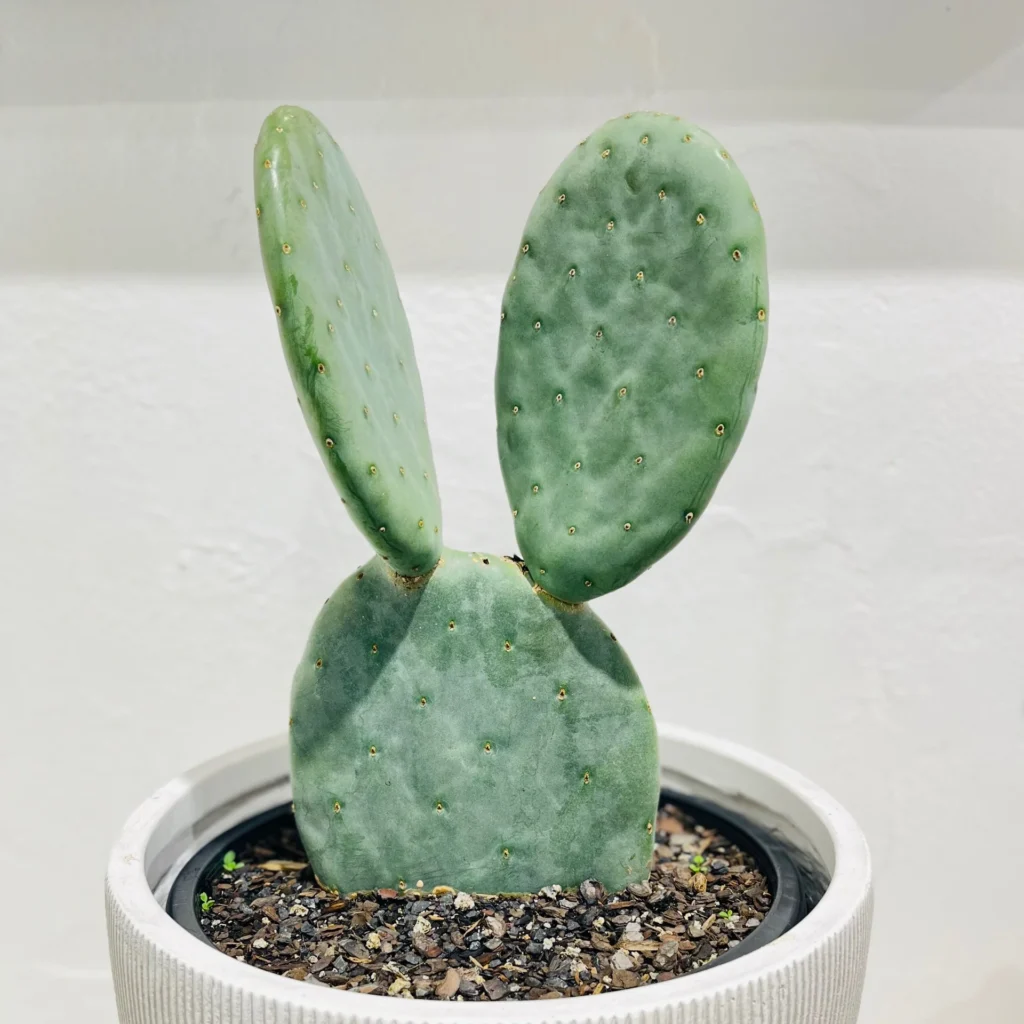
If you’re looking for a cactus that won’t jab your pets, this is a top pick. This spineless variety of prickly pear offers the charm of cacti without the danger of sharp spines.
Its pads are smooth to the touch and won’t cause injury if your cat or dog brushes past.
2. Christmas Cactus (Schlumbergera)
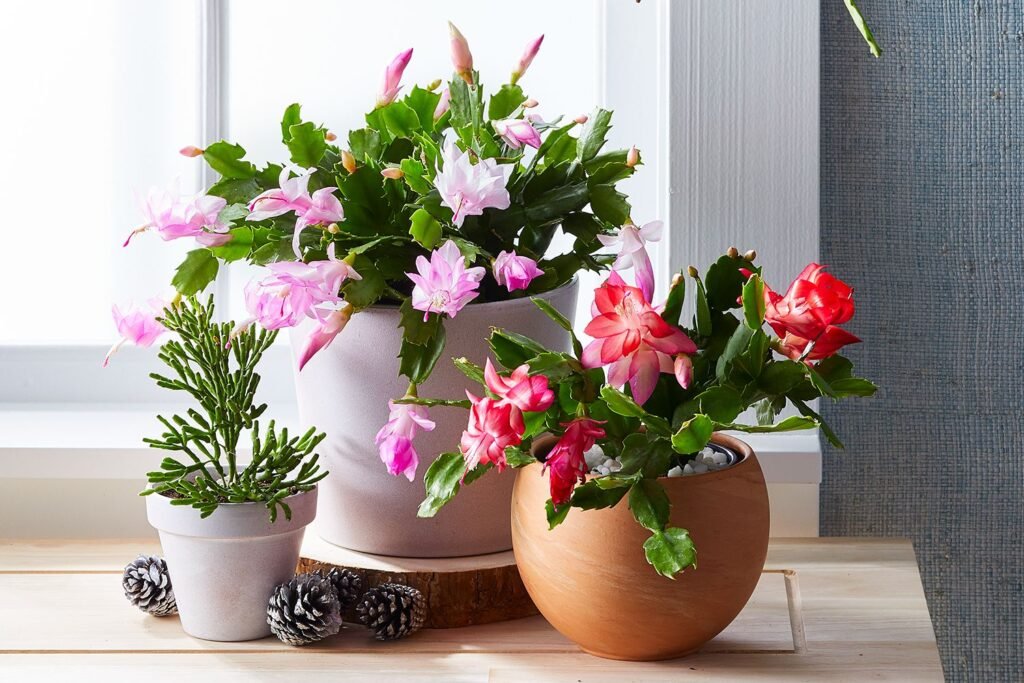
A classic holiday favorite, the Christmas cactus is not just festive—it’s also one of the safest cactus-like plants for pets. It’s non-toxic to cats and dogs, has no spines, and thrives in indirect light.
Plus, its vibrant winter blooms add color without concern.
3. Bunny Ear Cactus (Opuntia microdasys)
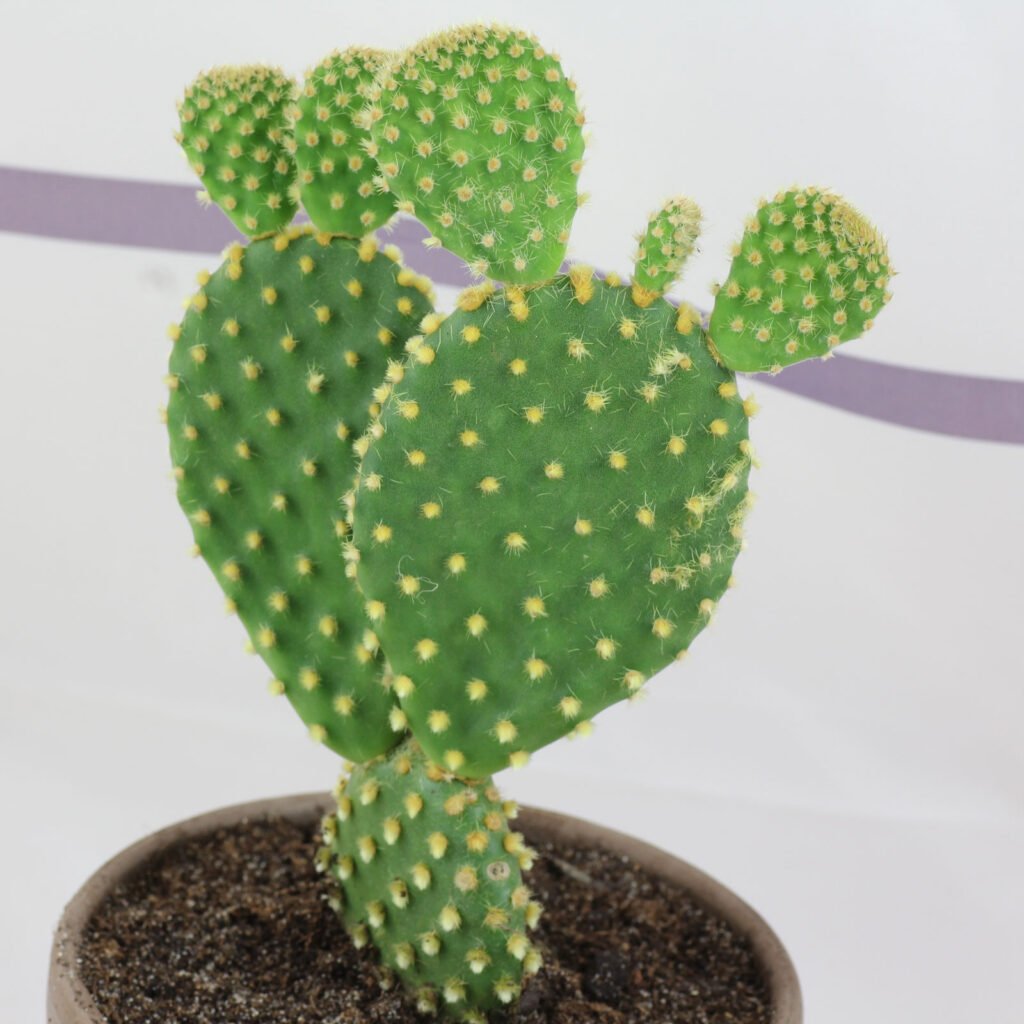
This plant gets its name from its ear-shaped pads, giving it a playful appearance. However, don’t be fooled—it’s covered with tiny, hair-like glochids that can irritate skin.
While not toxic, it should be placed well out of reach of curious noses and paws.
4. Barrel Cactus (Echinocactus grusonii)
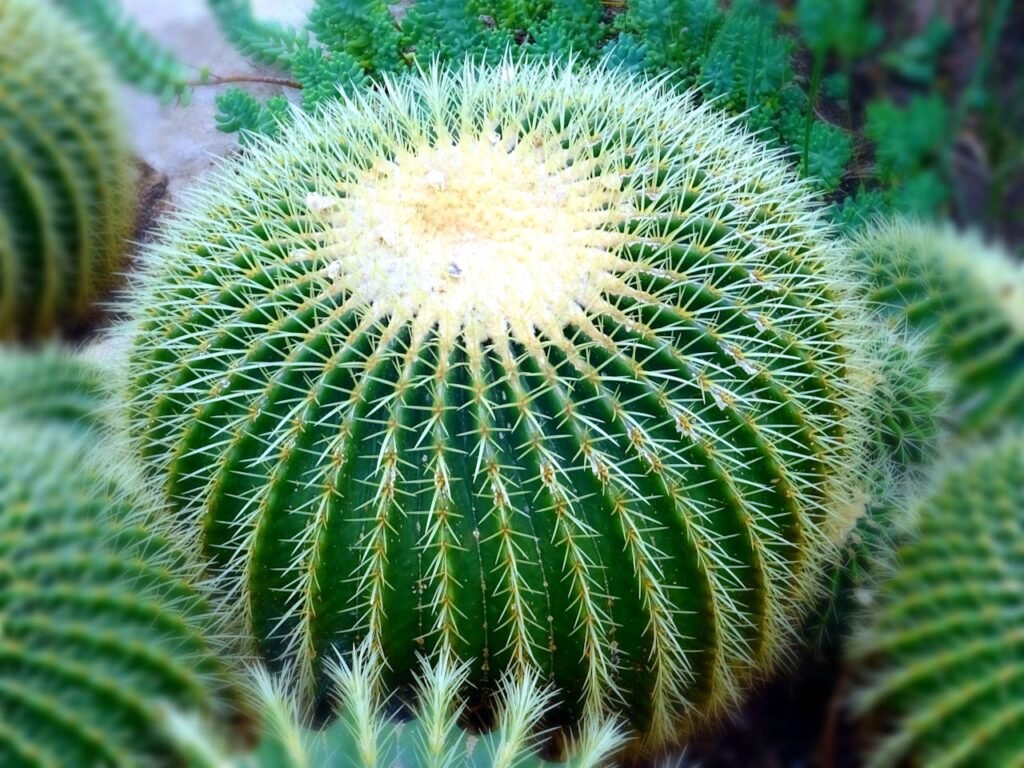
Known for its dramatic, spherical shape and bright yellow spines, the barrel cactus makes a striking statement. However, its long, sharp spines can be hazardous in high-traffic areas.
It’s best kept in corners, behind furniture, or in elevated planters where pets don’t frequent.
5. African Milk Tree (Euphorbia trigona) (Bonus Pick)
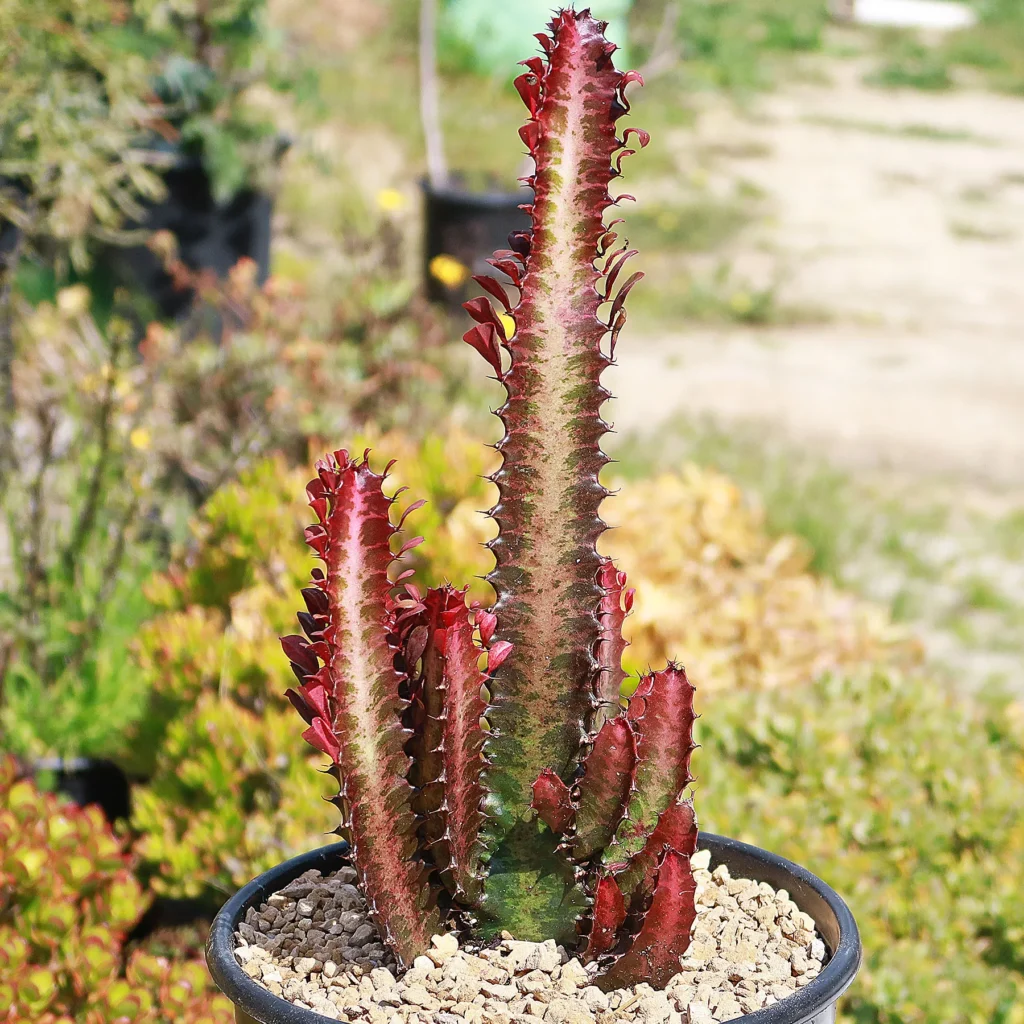
Though technically a succulent and not a cactus, this tall, architectural plant often ends up in cactus collections.
However, it produces a toxic milky sap that can irritate skin and is harmful if ingested—so it’s best avoided in homes with pets.
Safety Tip:
Always cross-reference any new cactus with the ASPCA’s Toxic and Non-Toxic Plant List before bringing it into a pet-friendly home.
By selecting your cactus varieties thoughtfully, you can enjoy the charm of desert plants while giving your pets a safe environment to explore.
Common Problems and How to Troubleshoot Them
Even with the best efforts, things don’t always go as planned. Here’s how to deal with some common hiccups:
1. My Pet Still Keeps Going for the Cactus
If your pet isn’t responding to repellents, try combining techniques—like placing physical barriers alongside scent deterrents. Sometimes it takes trial and error to find what works best for your specific pet.
2. Repellent Spray Is Causing Leaf Damage
Always test a small patch of the plant before spraying. If leaf spotting or wilting occurs, dilute the solution more or consider using indirect methods like cotton balls or nearby diffusers instead.
3. Soil Smells or Gets Moldy
This could be from overwatering or lack of air circulation under barriers. Allow the soil to dry completely and remove excess mulch or decorative stones if airflow is restricted.
4. My Pet Got Poked by a Cactus
If spines get into paws or skin, remove them gently using tweezers and clean the area. Keep an eye on swelling or irritation, and consult your vet if needed.
FAQs: Cactus and Pet Safety
Q1: Can cactus be harmful to pets?
Yes, while most cacti are not toxic, the sharp spines can injure pets if they try to chew or paw at them. Always research individual species and prioritize safety.
Q2: What’s the safest cactus variety for homes with pets?
The Christmas cactus (Schlumbergera) is a top choice—spineless, non-toxic, and attractive. Spineless prickly pear is another option, though still best placed out of reach.
Q3: Are essential oils safe for deterring pets?
Some essential oils can be toxic to pets (like tea tree or citrus oils for cats), so use extreme caution. Always dilute heavily and use diffusers rather than applying directly near plants.
Q4: Can I train my pet to ignore cacti?
Yes! With consistent positive reinforcement and redirection techniques, many pets learn to avoid plant areas altogether.
Q5: Is it okay to keep cactus outdoors with pets?
Yes, but consider raised beds or fenced-off areas, especially for dogs that dig or roam. Outdoor environments may also pose additional hazards like insects or mold.
Final Thoughts
Creating a harmonious home for both your cactus and your beloved pets is absolutely achievable. With the right combination of natural repellents, physical barriers, thoughtful placement, and patient training, you can protect your plant babies while keeping your furry companions safe and happy.
Remember—every pet is different. What works for one might not work for another. But by observing, adapting, and showing a little creativity, you’ll find the right balance.
Cactus pet repellent techniques aren’t about keeping pets away from your life—they’re about making sure everything coexists peacefully.
Whether you’re new to indoor plants or a seasoned cactus collector, these tips will guide you toward a pet-proof, prickly paradise.
